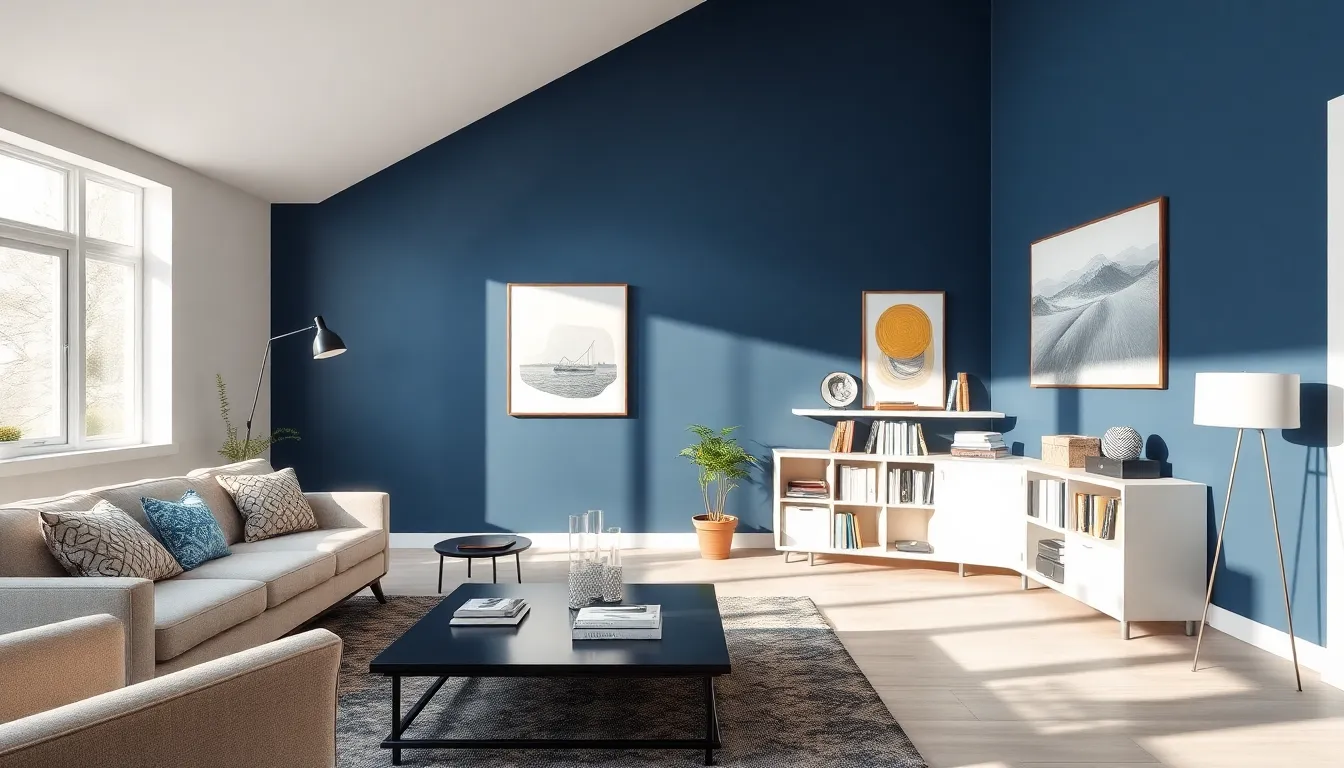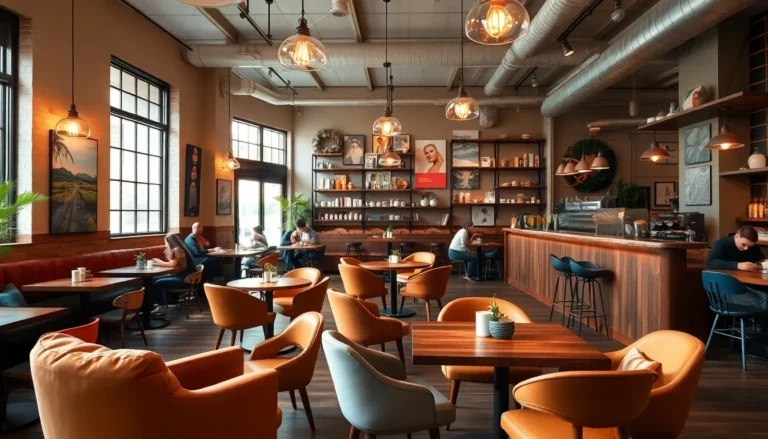Table of Contents
ToggleWhen it comes to sprucing up a room, walls often get overlooked. Yet they carry the potential to completely transform a space from ce shabby to chic. If you think walls are just there to hold up your ceiling, think again. Interior wall design is not only about slapping on some paint and calling it a day. It’s about making a statement that embodies the essence of your style. In this guide, we will explore eye-catching interior wall design ideas to unleash your inner designer and make those walls sing.
Understanding Interior Wall Design

Interior wall design refers to more than just aesthetics: it’s about creating an environment that reflects personal taste and enhances functionality. Each wall serves a purpose, acting as a canvas for creativity while maintaining a cohesive flow throughout the space. Whether it’s in a cozy living room, a bustling home office, or a tranquil bedroom, understanding the principles behind wall design is paramount. Here are a few key aspects to consider:
- Functionality: A practical wall design can improve the usage of space.
- Style: Choose designs that resonate with individual preferences, whether they’re modern, rustic, or eclectic.
- Cohesion: Walls should complement the overall decor of the room, ensuring harmony and balance.
Types of Wall Finishes
Wall finishes can have a significant impact on the overall design of a room. From smooth textures to intricate 3D designs, they offer limitless possibilities. Here are some popular types:
- Paint: The most common finish, it can create a fresh look on a budget.
- Wallpaper: Available in countless styles, wallpaper can add depth and character.
- Wood Paneling: Offers warmth and texture and is perfect for rustic or modern styles.
- Stucco: Adds a Mediterranean feel and is great for accent walls.
- Textiles: Fabrics can bring a sense of softness and warmth, ideal for bedrooms.
Choosing the right finish is essential, as it sets the mood for the entire room.
Color Schemes and Patterns
The color of a wall can influence mood, perception, and even the size of a room. Selecting a strategic color scheme will unify the room and draw attention to focal points. Here are a few approaches to consider:
- Monochromatic: Sticking to various shades of one color creates harmony and expands space perception.
- Complementary: Pairing colors directly opposite on the color wheel can create a vibrant, energetic feel.
- Analogous: Choosing colors next to each other provides a serene and comfortable ambiance.
Patterns can also add dynamism to wall design. Stripes, geometric shapes, or floral designs can create a visual interest that takes the design to another level.
Incorporating Texture Into Wall Design
Texture is vital for creating depth and character in wall design. Here are some imaginative ways to bring texture to interior walls.
Creative Wall Art and Murals
Murals can transform an ordinary wall into an extraordinary piece of art. Personalizing your space with artwork that truly speaks to you can elevate the aesthetic of any room.
Gallery Walls and Photo Displays
There’s nothing like a gallery wall to tell a story. Mixing frames and arrangements of meaningful photos or artwork can inject personality into your interior. It serves as a continuous conversation piece while making the room feel more lived-in and welcoming.
Using Shelves and Decorative Elements
Decorative shelves can play a dual role: providing storage while also showcasing personal items. Consider these ideas for utilizing shelves:
- Floating Shelves: Great for minimalistic designs, floating shelves give the illusion of more space.
- Built-In Shelves: Ideal for maximizing storage and can be fitted seamlessly into any wall.
- Decorative Elements: Trinkets, plants, or books can add character while providing functionality. Mixing materials like wood and metal can also create an engaging visual balance.
Sustainable and Eco-Friendly Options
As consciousness about environmental issues grows, many are opting for sustainable wall design solutions. Choosing eco-friendly materials can positively affect not only aesthetics but also the environment. Consider:
- Reclaimed Wood: Adds unique character and helps reduce deforestation.
- Low-VOC Paints: Zero volatile organic compounds contribute to healthier indoor air.
- Bamboo Wall Coverings: Fast-growing and sustainable, bamboo brings a fresh look to interiors.
- Natural Stone: Longevity and durability make this a viable eco-friendly option for both looks and construction.




